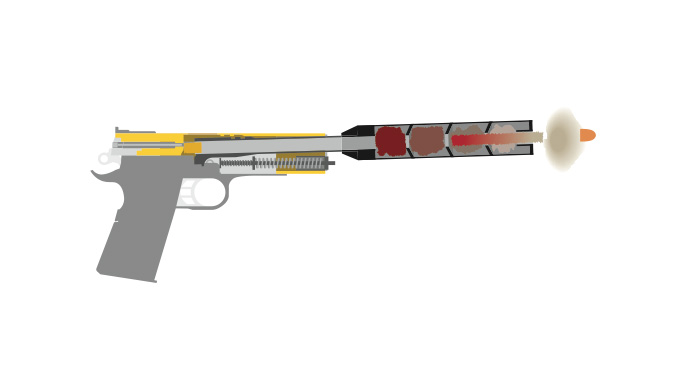To a majority of shooters, one of the most unpleasant things about shooting is the deafening sound that accompanies each shot fired. A combination of expanding gasses and changes in air pressure and air temperature culminate in a noise that can be louder than a jumbo jet taking off. Let that soak in for a second. That’s a sound that’s louder than a widebody on take off, just inches away from your ears with every shot. I don’t know about you, but I value my hearing, and to keep from losing it let’s see what we can do to protect it.
- RELATED STORY: 19 Silent Suppressors From the Ballistic Buyer’s Guide
First, it’s important to understand how noise-induced hearing loss (NIHL) pertains to shooting. NIHL can be caused by even a one-time exposure to a sharp “impulse” sound, such as a gunshot, let alone multiple exposures like you’d get at a shooting range.
Sounds of less than 75 decibels, like those from a vacuum cleaner, are unlikely to cause hearing loss while long or repeated exposure to sounds at or above 85 decibels (think gas lawn mower) are known to cause hearing loss. The louder the sound, the shorter the amount of time it takes for hearing to be damaged.
Advertisement — Continue Reading Below
Gunshots, which can range between 140 to 175 decibels, can rupture the eardrum or damage the bones in the middle ear, causing NIHL that can be immediate and permanent even after a single shot. What can we do about it?
Ear protection such as plugs or muffs, or, even better, electronic muffs, are standard issue nowadays. I never go to the range without a good set of electronic ear protection. But is there an alternative to having your ears plugged and having pinching, hot and sweaty muffs over your head and ears? Absolutely.
Shooting with sound suppressors can be a liberating experience. With the right combination of gun, suppressor, and ammo, you can shoot without worn ear pro at safe hearing levels. A suppressor is essentially a muffler for your gun. It greatly reduces not only the level of noise coming from your gun, but it also reduces recoil and muzzle flash as well, increasing accuracy and overall shooting enjoyment.
Advertisement — Continue Reading Below
It’s worth mentioning that not all suppressed guns are hearing safe, so do consult with a knowledgeable source such as a suppressor manufacturer or your local dealer before shooting without any hearing protection.
Let’s examine how a sound suppressor works.
How Suppressors Work
Advertisement — Continue Reading Below
Let’s see how a suppressed gun works. Although its overall operation is pretty much the same as an unsuppressed gun, what it does with the resulting gasses during and after the process of a cartridge being fired is what makes the big difference in noise reduction.
How Are Suppressors Attached?
Suppressors are attached to guns in a few ways. Some suppressors are threaded directly onto the gun by way of a threaded barrel. Just screw it on and you’re good to go.
Advertisement — Continue Reading Below
- RELATED STORY: 17 Covert Sound Suppressors For Plinking, Practice & More
Other suppressors require a quick-detach device such as a specially designed flash hider, muzzle brake or piston that can interface with it. These usually twist on and off with a secured locking ring of some sort. The image shows this method with an AAC suppressor and flash hider. Lastly, there are some guns that actually have a suppressor built into them, making them integrally suppressed.




























